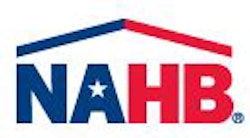
The National Association of Home Builders (NAHB) on Tuesday requested that the Occupational Safety and Health Administration (OSHA) withdraw a proposed rule that would drastically lower the permissible exposure limit (PEL) of crystalline silica for the construction industry.
OSHA Announces Proposed Rule to Protect Workers Exposed to Crystalline Silica
The rule also requires impractical medical surveillance of construction industry workers, extensive and costly recordkeeping processes, and restrictions on certain construction site work practices, which contradict existing safety procedures.
Construction Safety Council Urges OSHA to Withdrawl Silica Rule
“The real problem here is that OSHA doesn’t understand how this rule would work on real world residential construction sites,” said NAHB Chairman Kevin Kelly, a home builder from Wilmington, Del. “Before this rule moves forward, OSHA needs to work with us and our members to craft something that is pragmatic, workable and actually improves construction industry workers’ health and wellbeing.”
OSHA has determined that a rule is needed to substantially reduce the risk of serious disease from exposure to airborne concentrations of silica dust. This, however, runs contrary to data from the national Centers for Disease Control and Prevention that shows a sharp decline in the incidences of silicosis in recent decades. To date, OSHA has not explained how drastically lowering the PEL will effectively reduce the current number of silica-related illnesses and deaths.
As such, NAHB is recommending that OSHA use the existing PEL for silica in construction until a comprehensive study demonstrates that the PEL must be made lower for legitimate health reasons. NAHB has also advised OSHA to focus mandated control methods on silica-generating tasks – within the construction industry - that have been proven by silica exposure monitoring data to generate high levels of silica exposure above the existing PEL.
In addition to the drastic 80 percent reduction in the PEL, NAHB believes the rule is economically and technologically unfeasible for the industry to comply with. OSHA has estimated that the rule will cost the industry approximately $511 million to implement, however, analyses show that this number is grossly underestimated. Economic analysts estimate the cost to be closer to $2.2 billion per year, and likely to increase given the present state of the economy.
Given the many problems associated with the proposed rule, NAHB is urging OSHA to withdraw it, and instead, treat it as an advance notice of a proposed rule. Doing so will allow the agency time to collect more comprehensive data and determine how best to align the rule with current industry practices.
ABC Calls for OSHA to Withdraw Proposed Crystalline Silica Rule


























